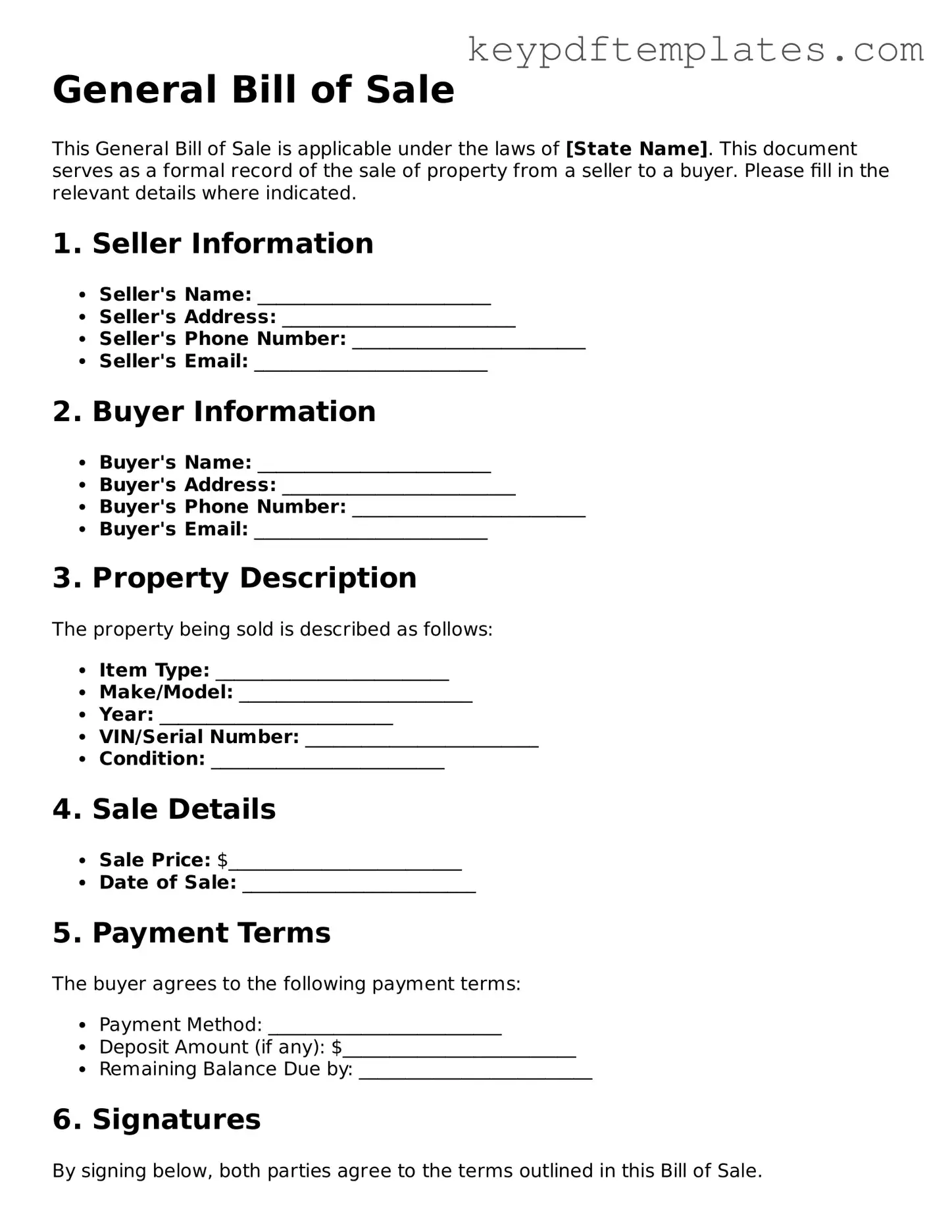Printable General Bill of Sale Template
The General Bill of Sale form is a legal document that serves as proof of the transfer of ownership of personal property from one party to another. This form outlines essential details such as the description of the item, the sale price, and the date of the transaction. By utilizing a General Bill of Sale, both the buyer and seller can ensure clarity and protection in their agreement.
Modify Document Online
